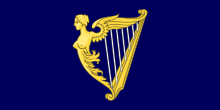User:Mrchris/History/checklist
- Todo
- Find any new articles for this section at petscan history, the current total count is 86
- Update Portal:Kilkenny#Selected history articles
- Review history related articles for Level 1
- Review history related articles for Level 2 which will be included in Portal:Kilkenny history section.
- Review history related articles for Core articles list.
- Checklist
- Provides a narrative of the settlement's history. An outline of the major events in the county's history (about 4 to 6 paragraphs, depending on complexity of history), including some detail on current events. This section should be kept to 10 paragraphs or less, preferably. Topics that can be covered include, but are not limited to;
- the origin of the name,
- original inhabitants,
- original settlements,
- occupying powers,
- transitions of power,
- population spikes,
- recessions,
- reasons for settlement/growth,
- dominant activities,
- events that shaped the community,
- recent history, etc.
- A note on the Etymology. Details of the origin of the name should be placed in this section; if there is sufficient material an Etymology subsection should be created within the History section. a note on the origin of the settlement's name. If there is sufficient material to justify a subsection header, then it may be titled as etymology or Toponymy.
- If a settlement has a name in another recognised regional or national language, this can be presented here.
- A note on the earliest known history of the area and the earliest known mentions of the area.
- original inhabitants
- original settlements
- Notable historic buildings, such as castles and monasteries,
- occupying powers, transitions of power, significant battles, etc. Consider through the ages, i.e. celt, Norman, Middle and Modern ages.
- A note on the earliest known history of the county (any Bronze Age or celt artefacts for example), and the earliest known Irish historiography of the county (e.g. as a former Kingdom).
- A note on what brought on the urban expansion within the settlement (e.g. Textile industry?)
- A note on former economic sectors.
- A note on major/notable Clan presence.
- population spikes,
- recessions,
- reasons for settlement/growth,
- dominant activities,
- events that shaped the community,
- recent history
- A note on the earliest known history of the settlement (any Bronze Age or Roman artefacts for example), and the earliest known mentions of the settlement.
- Consider prose (or subheadings) on Industrial history, Social history or Political history where appropriate.
- Avoid using headings that arrange the history of a settlement according to century or decade.
- Avoid organising prose into timelines. If these exist (or are developed), consider placing them in a [[History of _]] or [[Timeline of _]] article.
Selected history articles

Confederate Ireland, also referred to as the Irish Catholic Confederation, was a period of Irish Catholic self-government between 1642 and 1652, during the Eleven Years' War. Formed by Catholic aristocrats, landed gentry, clergy and military leaders after the Irish Rebellion of 1641, the Confederates controlled up to two-thirds of Ireland from their base in Kilkenny; hence it is sometimes called the "Confederation of Kilkenny".
The Confederates included Catholics of Gaelic and Anglo-Norman descent. They wanted an end to anti-Catholic discrimination within the Kingdom of Ireland and greater Irish self-governance; many also wanted to roll back the plantations of Ireland. Most Confederates professed loyalty to Charles I of England in the belief they could reach a lasting settlement in return for helping defeat his opponents in the Wars of the Three Kingdoms. Its institutions included a legislative body known as the General Assembly, an executive or Supreme Council, and a military. It minted coins, levied taxes and set up a printing press. Confederate ambassadors were appointed and recognised in France, Spain and the Papal States, who supplied them with money and weapons.
At various times, Confederate armies fought Royalists, Parliamentarians, Ulster Protestant militia and Scots Covenanters; these controlled the Pale, parts of eastern and northern Ulster, and the region around Cork. Charles authorised secret negotiations which in September 1643 resulted in a Confederate–Royalist ceasefire and led to further talks, most of which proved unsuccessful. In 1644, a Confederate military expedition landed in Scotland to help Royalists there. The Confederates continued to fight the Parliamentarians in Ireland, and decisively defeated the Covenanter army in the Battle of Benburb.
In 1647, the Confederates suffered a string of defeats at Dungan's Hill, Cashel and Knocknanuss. This prompted them to make an agreement with the Royalists, leading to internal divisions which hampered their ability to resist a Parliamentarian invasion. In August 1649, a large English Parliamentarian army, led by Oliver Cromwell, invaded Ireland. By May 1652 it had defeated the Confederate–Royalist alliance, although Confederate soldiers continued a guerrilla warfare campaign for a further year. (Full article...)
